This Year's Aero-Gadget Crop Was Impressive -- Especially In
Terms Of Enhancing Our Cockpits
Final Compilations by ANN Editor-In-Chief/Gadget Hound, Jim
Campbell
When it comes to the people, planes and products of the aviation
business, ANN firmly believes there is no such thing as an
embarrassment of riches. 2010, as usual, saw a spate of new
products, programs and 'gadgets' designed to separate a pilot from
his flying dollar... fortunately, the vast majority of them are
quite worthy of foregoing a few (or more) $500 hamburgers.
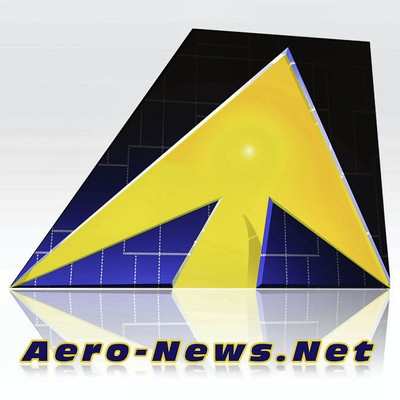
In fact, for 2010 (despite the worst damage that the economic
malaise could do) we really had to struggle with the list in order
to pare it down to a manageable assembly and if we hadn't, we'd
have easily had to increase the size of our annual 'Best Of' list
to several dozen, or so, to accommodate them all.
From established products that continue to impress, to new and
exciting developments across the range of general aviation... here,
to our eyes, are some of the most worthy 'gadgets', products and
programs of 2010.
In Search Of The Perfect Cockpit
ANN has had an amazing year discovering and operating some
amazing new technologies that raise the level of cockpit capability
to levels heretofore unimaginable for the general aviation world.
Five products, offered by four companies knocked our socks off in
2010 and therefore DESERVE and EARN their place as some of the TOP
TEN Aero-Gadgets/Products of the Year.

Before we name the best of the best, let me offer one intriguing
insight into each of these products and the companies behind them.
These are not huge companies with big budgets and unlimited
resources… and in nearly every case, they are competing with
mammoth businesses with lots of bucks and incredible R&D
budgets… which means that most of these products should
never have seen the light of day… unless you look at the
fact that innovation and quality are still enough, in this
value-conscious market to allow David to keep Goliath at
bay… and I find that both heartening and a positive sign for
the future of GA.
Avidyne Entegra Release 9
 We are blown away with the
experience we have had behind the Avidyne Entegra Release 9 Glass
Cockpit… our flying experience has seen increases in
utility, safety, comprehension and enjoyment since our upgrade late
in 2009… and the last several hundred hours in our SR22 have
been some of the best of our career. ‘R9’ not only does
a great job of making our bird a solid Single-Pilot IFR
transportation system, it does so with an ease of use, as well as
an inspired methodology, that makes this not only one of the most
capable glass panels in the business, it does so with a greater
degree of safety, awareness and simplicity than anything
we’ve flown before.
We are blown away with the
experience we have had behind the Avidyne Entegra Release 9 Glass
Cockpit… our flying experience has seen increases in
utility, safety, comprehension and enjoyment since our upgrade late
in 2009… and the last several hundred hours in our SR22 have
been some of the best of our career. ‘R9’ not only does
a great job of making our bird a solid Single-Pilot IFR
transportation system, it does so with an ease of use, as well as
an inspired methodology, that makes this not only one of the most
capable glass panels in the business, it does so with a greater
degree of safety, awareness and simplicity than anything
we’ve flown before.
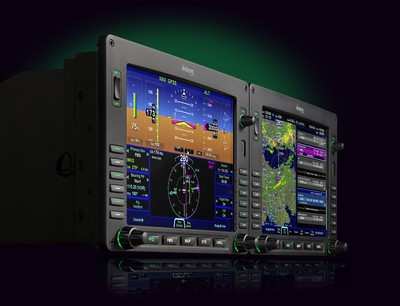
Simply put, the Entegra Release 9 remains the Best Panel in
GA.
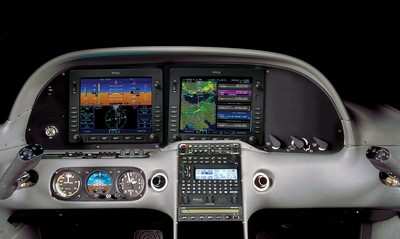
Entegra Release 9 was a complete upgrade of the elder Entegra
product line. In the case of our elder Entegra-equipped aircraft,
the R9 upgrade got rid of our old PFD & MFD and GPS/NAV/COMs,
while replacing them with two high-resolution IFD5000 displays,
dual Air Data and Attitude Heading Reference Systems (ADAHRS),
dual-redundant FMS900w systems with a QWERTY keypad,
next-generation fully-digital 16-watt VHF NAV/COM radios, and dual
WAAS/RNP-capable GPS receivers.
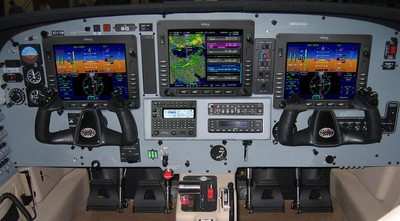
We’re looking forward to extending the promise of R9 with
the long-awaited Synthetic Vision upgrade (late this year) and the
highly anticipated DFC100 digital autopilot (any day now)…
thus equipped, out little piston bird will have capabilities that
competes with anything else I’ve ever flown… and we
simply can’t wait.
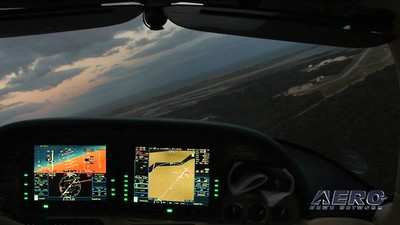
Darn… this thing has been great to us so far but with SVS
and the DFC100, we anticipate an even greater level of
satisfaction… which is an amazing concept to us, as happy as
we’ve been so far. We simply can’t wait…
Aspen Evolution PFD/MFD Displays
Aw, heck…. Having Aspen and Avidyne in the same industry
is kinda like taking the taking the prettiest girl in school to the
prom… until her cousin shows up and proves to be just as
much of a knockout – and then she starts making eyes at
you… I mean, what’s a guy to do?

Then, against, it’s nice to have options… grin.
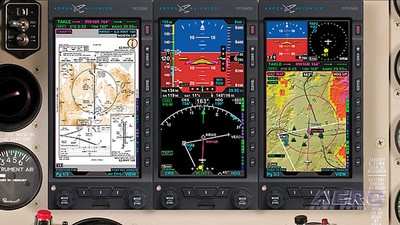
Aspen Avionics is all about options. Aspen may be one of the
most laudable and positive success stories in all of GA… at
least for the last decade… Coming out of nowhere and going
up against mighty Garmin and other heavyweights, Aspen Avionics has
innovated its way into thousands of cockpits around the
world… and they did it with the three most important
qualities GA needs – Innovation, Quality and Value.
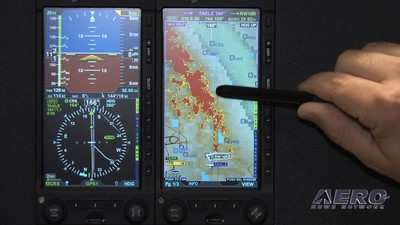
While primarily designed as a retrofit system, the Aspen PFD/MFD
system, especially in their incredibly cost-effective Three-Screen
configuration, is getting to the point where it has nothing to make
excuses over… especially with Synthetic Vision coming later
this year. This company has innovated aggressively and evolved
continuously… no matter what, the Aspen program has proven
to be one of the most adaptable and capable additions available to
any GA cockpit… and we have strong reason to believe that
basic GA won’t be the only aspect of aviation benefitting
from this system fop long, as we know that a number of turbine
operators are lusting over the possible upgrade to the Evolution as
soon as circumstances permit -- now that the system offers Part 23
Class II options.
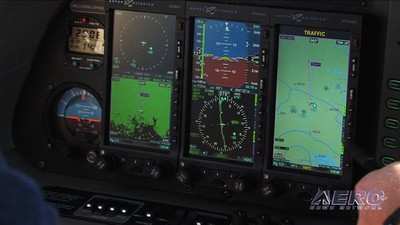
The most powerful aspect of the Evolution design is the fact
that you can pretty much install it just about everywhere… a
massive STC program has allowed for installation in hundreds of
popular GA fixed wings and helos, while the future should allow
more types to take on the Aspen Evolution’s revolutionary
features. The form factor allows for installations that require a
minimal amount of panel disruption and the growing roster of
features (weather, traffic, synthetic vision, engine data, you name
it) make the Evolution a compelling value for nearly any
airframe… and a very cost-effective one, to boot. Best of
all, we hear GREAT reports on customer service and support –
which makes Aspen a very uncommon start-up (it being less than a
decade old)… a company that’s gotten it right…
right from the start.

As a result, ANN finds the Aspen Evolution glass panel program
to be one we can recommend without reservation… and possibly
one of the best bargains we’ve seen in GA avionics…
period.
Avidyne DFC90/DFC100
Once Garmin brought forth their GFC700 program, a number of
pundits thought that they’d sew up that aspect of the cockpit
electronics biz, as well. But… Avidyne had other
plans… big plans. While the GFC700 program was an excellent
addition to the tremendous functionality brought forth by the G1000
glass panel system, Avidyne was prepared to take them on and try to
blow them out of the water… and it sure appears that they
have done just that.

Avidyne DFC90
The DFC90 (for the many thousands of elder Entegra-equipped
aircraft that are flying today) is the game-changer of
game-changers when it comes to flight guidance systems. The DFC100
(for the more capable Release 9 system) takes it a few notches
farther – to a point where one has to wonder how (or who)
likely it is that some entity may try and top what these products
offer.
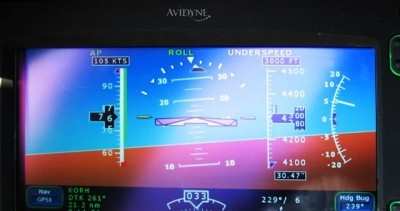
Avidyne’s DFC90 Attitude-Based Digital Autopilot offers
‘the precision of an attitude-based flight control
system’ and adds Avidyne’s truly innovative Envelope
Protection capability.
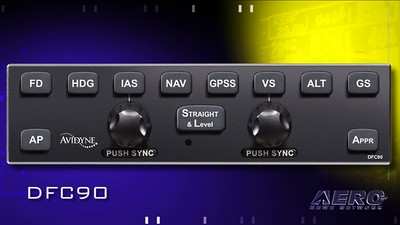
The DFC90 has ‘all the standard vertical and lateral modes
of operation of a turbine-class’ autopilot system, including
Flight Director (FD), Altitude Hold (ALT), Airspeed Hold (IAS),
Vertical Speed Hold (VS), Heading (HDG), and Navigation (NAV, APPR,
LOC/GS, GPSS). More important, it does all this with a greater
degree of accuracy than anything we’ve seen in the piston
realm… period.
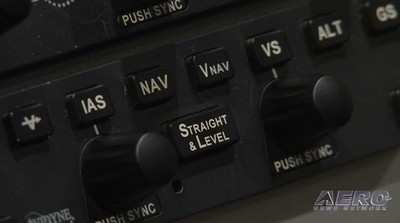
The Flight Envelope Protection feature set is designed to
prevent autopilot-induced overspeeds (which Avidyne notes as having
been a major contributing factor in many GA accidents). This
includes having the autopilot avoid exceeding the flight envelope
while providing visual and aural warnings to the pilot. This is a
really smart feature, folks… available lift and speed margin
are ‘calculated constantly in the background whenever any
mode, including Flight Director modes, are in operation.’ And
while operating in Flight Director modes, all these actions appear
as guidance cues with corrections integrated visually into the
"V-bar" commands. A simple ‘Straight & Level’
Button does just that… returns the aircraft to a straight
level configuration… even when you’ve assumed
(willfully or not) an unusual attitude. This feature overrides all
autopilot modes and levels the aircraft in both pitch and roll from
a ‘wide range of capture attitudes.’ The capability
allows for tremendous convenience (hit it and deal with something
else requiring your attention) as well as a particularly great ally
when things start to get flaky (and is the perfect thing to teach a
nervous passenger to use in the event you become incapacitated or
otherwise unable to take care of business.

The DFC100 takes all this electronic wizardry up a few notches
with even more in its bag of tricks… and we’re really
excited about that… as we expect to be one of the first
installs when the device earns certification (any day now). Among
other things, the DFC100 supports Avidyne Release 9’s FMS
Vectors mode, which allows the pilot to remain coupled during air
traffic control (ATC) vectors operations without having to manually
change autopilot modes. The DFC100 also supports VNAV, Altitude
Defaults to Armed, Roll Servo support, Full time Envelope Alerting,
Enhanced aural voice alerts, Flap input, Dual AHRS support, Servo
Limit, Bank Limit, and Coupled Missed Approaches in VNAV.
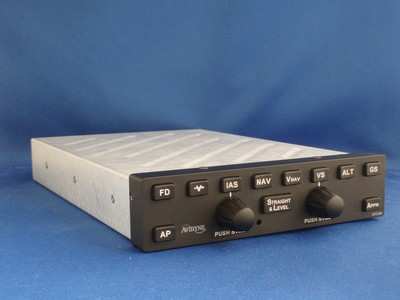
Avidyne DFC100
It has a comprehensive suite of features and owners of the
several hundred DFC90s already installed are reporting that the
autopilot is definitely an upgrade that has exceeded their
expectations. We expect the DFC100 will do all that… and
more. As far as autopilots go in GA, the DFC90 and DFC100 will be
setting the standard for quite some time and definitely qualify as
one of the ten best ‘Aero-Gadgets’ of 2010.
PS Engineering PMA8000BT
It’s a brilliantly simple feature… and it offers so
much utility that one has to wonder why it took so long to show
up… or why a small but highly capable little specialty
avionics manufacturer beat everyone to the punch. Bluetooth…
for audio panels… for airplanes. Who’da thunk it?

PS-Engineering’s latest audio panel, the new PMA8000BT,
features Bluetooth capability, and was unveiled at the 53rd AEA
convention in Orlando last Spring. The Bluetooth functionality of
the PMA8000BT allows flyers with smart phones, (iPhone, BlackBerry,
Palm Pilot, etc…), to connect wirelessly with the audio
panel. This capability allows (among other things) the music in
your PDA/Smartphone to stream into the audio panel for distribution
to the aircraft occupants. Better yet; it allows the pilot, and
anybody on the intercom, to connect to a cellular telephone from
the audio panel without the entanglement of external wiring.
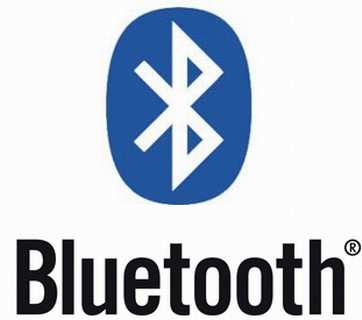
Operation of the Bluetooth link is quite simple (and indeed,
ANN’s Jim Campbell succeeded in using it… on his first
try) and only requires using the Smartphone to discover the
PMA8000BT and establish a link. From there, one can either place a
call and press the TEL button, or begin streaming music from their
iPod or other device. Four muting modes and music distribution
capability allow the pilot and passengers to decide how the music
is treated.
In addition to the new Bluetooth abilities, thePMA8000continues
to offer all the features of the PMA8000B (which we have and LOVE
in our SR22), including six-place intercom with IntelliVox,
dual-channel entertainment inputs through hardwire connections,
fully featured audio panel functions with the new Monitor Mode,
digital aircraft recorder and pilot selectable audio panel
configurations.

PMA8000BT
We’re tremendously enthused with the box’s abilities
and the ingenuity that brought it to market. We’re even more
pleased to see that ‘one of us little guys’ brought
this to the game long before any of the big companies did. It just
goes to show that honest innovation and hard work still matter in
GA and PS-Engineering continues to prove that on a daily basis. An
outstanding idea…and product. Congrats to PS-Engineering On
making this year's list of the best of Gadget Patrol -- 2010.
NFlightCam
While most of the emphasis in this segment of Gadget Patrol has
been on mighty feats of avionics daring, an ingenious new product
offers much to the cockpit environment… especially in
terms of training or just plain enjoyment of the flight
experience.
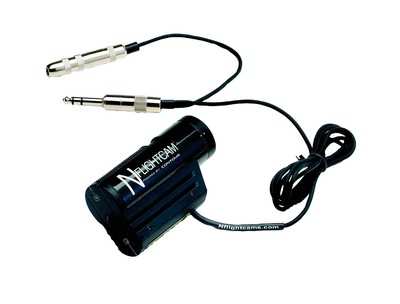
The NFlightCam is a compact, all-in-one video system is so easy
to use that it can literally become standard gear in your airplane
(and should be, in our opinion, for EVERY instruction flight).
It’s an in-cockpit video system that records HD video and
audio – and can be used to relive interesting flights, offer
phenomenal benefits in post-flight instruction briefings and
critiques, and even show that A&P of yours that annoying little
problem that never happens when he’s watching.
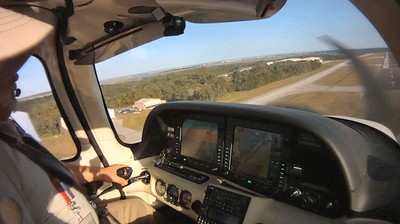
The NFlightCam Onboard
N377SR
Adapted from ContourHD video camera technology, NFlightCam has
done an impressive job of modifying these cameras for aviation
usage. It’s incredibly easy to use -- just slide the single
button forward to start recording in full HD video (1080p at 30 fps
or 720p at 60 fps), while a custom headset interface allows you to
record all of your communications, including intercom and radio.
Better yet, the new GPS-enabled camera system (cams are available
with or without GPS) uses a built-in GPS receiver to log your exact
location as it records video. Free software allows you to play back
your video while speed, altitude and position data are overlaid on
a Google Earth rendering. It looks really cool.
Both versions of the cameras have a rotating lens and laser
alignment system so you can mount the camera at any angle, see (for
sure) where you’re pointing the works and in what
orientation. A semi-wide angle (135 degree) lens capture pretty
much the entire cockpit (depending on where you mount it). The
NFlightCam package (available through Sportys) features Easy Edit
software to create, edit and share your videos, while each system
includes an adhesive mount, 3 hour battery, microphone jack, 2GB
micro SD card and USB cable. Oh yeah, the whole kit and caboodle
weighs only 4.3 oz.
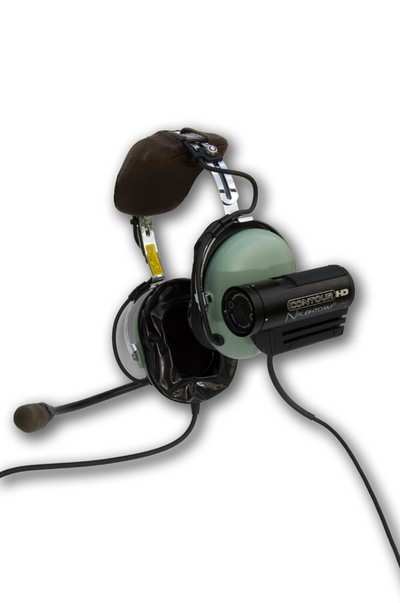
NO instruction flight from here on out should ever leave the
ground without something like this recording every second for
maximum learning retention and critique, while the ability to share
your journeys and adventures with friends and family might be JUST
the way to let them all know that you haven’t lost your mind
by learning to fly… and might convince more than one or two
of them to join you – as a matter of fact, there is a redhead
I’m dying to try this theory on (grin).
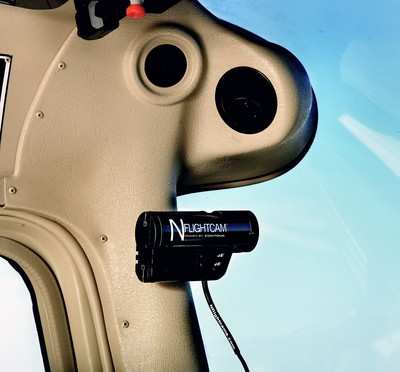
Various versions are available for well under $500 (some under
$400) and we are simply stunned by how quickly we’ve come to
adopt the use of these cams… the video quality is
surprisingly good, they’re light and easy to mount and
we’re simply having a ball with them. The NFlightCam has our
highest recommendation.

NEXT: We will be unveiling and reviewing
five more superb examples of Aero-Gadgetry over the next few
days… and we’ll also name our 2010 Aero-Gadget of the
Year!
 ANN's Daily Aero-Linx (05.06.25)
ANN's Daily Aero-Linx (05.06.25) ANN's Daily Aero-Term (05.06.25): Ultrahigh Frequency (UHF)
ANN's Daily Aero-Term (05.06.25): Ultrahigh Frequency (UHF) ANN FAQ: Q&A 101
ANN FAQ: Q&A 101 Classic Aero-TV: Virtual Reality Painting--PPG Leverages Technology for Training
Classic Aero-TV: Virtual Reality Painting--PPG Leverages Technology for Training Airborne 05.02.25: Joby Crewed Milestone, Diamond Club, Canadian Pilot Insurance
Airborne 05.02.25: Joby Crewed Milestone, Diamond Club, Canadian Pilot Insurance




























